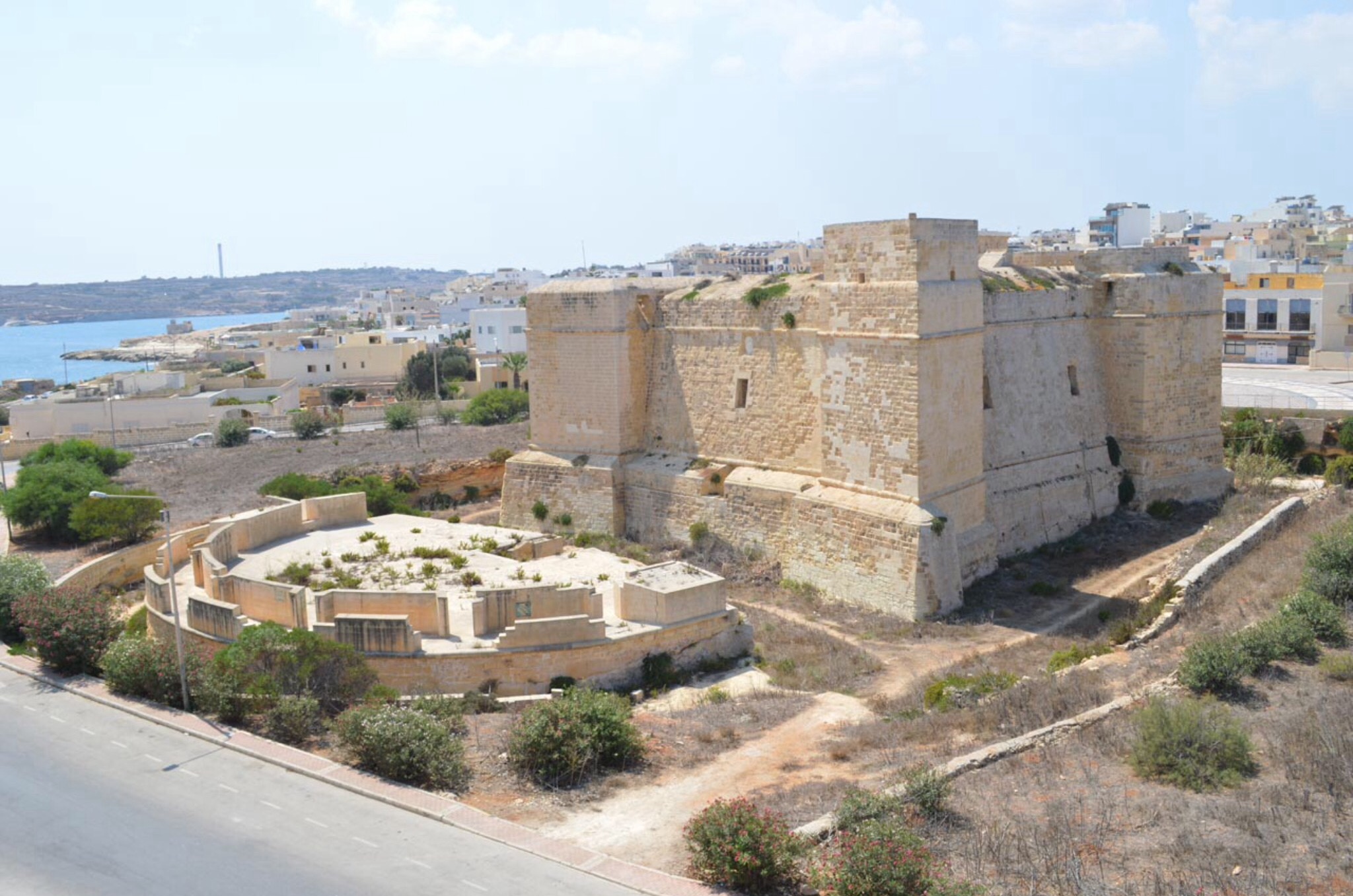
Built in 1616 to protect vulnerable parts of the Southern coastline from attacks by corsairs, St Thomas tower is one of five remaining watchtowers built during the reign of Grandmaster Wignacourt. Situated in the glorious seaside town of Marsascala, it was, in its day, one of Malta’s mightiest and most formidable tower.
After being stormed and captured by Maltese insurgents during the 1798-80 French Blockade, the tower fell into British hands and remained in use until the 19th century.
The seaside village of Marsaskala (also referred to as Wied il-Għajn locally) lies in the south east of Malta, very close to the fishing village of Marsaxlokk.
Although archaeologists found evidence of Roman settlements around Marsaskala, the area remained largely unpopulated until recent times. It seems that since the natural harbour was easily accessible by invaders, people were afraid of settling in the area. Just a hundred years ago, there were only a handful of residences in the area, and these were fortified by their owners.
Why it’s worth staying in Marsaskala?
The nearby beaches of St Thomas Bay and St Peter’s Pool also attract many swimmers. Other than to chill out, Marsaskala does not offer much else. There are some historical towers worth a visit. Also chapels and salt pans that might be interesting. Overall, however, this is a village where one goes to relax.

Mamo Tower
Mamo Tower was built in 1657 by the Mamo family. It can be found in the area known as Tar-Rumi, on the road leading to Żejtun. Built in the form of a cross, it has a small dry ditch around it and used to have a drawbridge.
On the inside, Mamo Tower has a big circular room in the centre, with three lateral smaller rooms opening into each of the arms. The fourth arm contains a flight of stairs leading to the roof. It was recently renovated by Din l-Art Ħelwa, a government owned organisation.

Tal-Buttar Tower
This tower, although privately owned, has been declared a national monument due to its unique features. Tall-Buttar Tower in fact contains a watermill within it and the machinery of the watermill is probably one of the best surviving examples in the Malta

The same family that built Mamo Tower built St Gaetan Chapel in1657. This chapel and its saint were very sought after by local fishermen and their devotion is reflected in the inscriptions still visible on the stone of the medieval building.

St Anthony Chapel
Originally within the limits of Żejtun, this chapel is dedicated to St Anthony of Padua and was built in 1675. The feast of St Anthony is still held annually on June 13th with a mass and a short homily.
Small loaves of bread are distributed among the congregation on this day. Within the chapel there’s a small statue of St Anthony which used to be taken out to sea by Maltese fishermen. They lowered the statue into the sea praying and hoping for a good catch. And farmers used to lower it inside their wells during droughts
The origins of the Three Crosses monument are shrouded in mystery. Over the years, there have been many different interpretations as to why it was built. Among the popular theories are that three monks were killed by Turks and buried there; a man died of the plague and was buried at the site by the people of Żejtun; an elderly hermit was buried three times in that place, after arising from death. Another less fantastical theory suggests that the Monument of the Three Crosses was built around 1615 to indicate the confines between Żejtun and Żabbar.

Żonqor Point Salt Pans
All along the coast of Marsaskala salt pans are a common sight, especially at Żonqor Point and also towards St Thomas Bay. These historic salt pans, called salini by the Maltese, have been carved out into the top layer of rock in squarish shapes. When filled with water, these salt pans make for an interesting sight to behold, especially at sunset.

Riħama Battery
Riħama Battery lies on the southern end of St Thomas Bay. It used to be an artillery battery built by the Order of the Knights between 1714 and 1716 as one of a series of coastal fortifications around the coasts of the Maltese Islands. The building still exists but has long since fallen into disrepair.
Marsaskala nightlife
The nightlife in Marsaskala ebbs and flows according to the time of the year. In summer it is usually packed with many Maltese and their families walking along the promenade, or just chilling around the harbour area, eating ice creams. In winter however, you’ll find the place quiet, with the nightlife concentrated around a few pubs.
